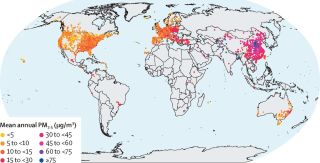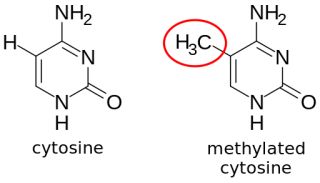Air Pollution and Alzheimer’s Disease
Exposure to traffic related air pollution may increase the risk of AD. Psychology Today


Exposure to Traffic-Related Air Pollution Linked to Alzheimer’s Disease
Have you ever gone outside, taken a deep breath in, and abruptly discovered that the air was not exactly what you expected? Instead of spring flowers, the air smells like smoke and car exhaust, almost thick enough to taste. You may have found yourself wondering how breathing all of this in could possibly be good for you. And you’re right, it isn’t good for you.
The Impact of Transportation-Related Air Pollutants
The CDC reports that “transportation-related air pollutants are one of the largest contributors to unhealthy air quality,” and exposure to traffic-related air pollution (TRAP) has been shown to be responsible for a number of health problems, like cardiac and respiratory ailments, diminished lung function and even premature death. Now some new research from Emory University in Atlanta has linked exposure to traffic-related air pollution to Alzheimer’s Disease (AD).

The Role of Particulate Matter in Air Pollution
There are a number of pollutants emitted by vehicles on the road, among them benzene, formaldehyde, acetaldehyde, carbon monoxide and dioxide and particulate matter, both large and small. The study by Li et al., (2024) focused on this last component of air pollution, especially on very fine particulate matter called PM2.5. Particulate matter is labelled by the diameter of the particles in the air. PM2.5 is tiny, with a diameter of 2.5 microns or less, finer than a human hair, which measures a relatively hefty 50 to 70 microns across. The California Air Resources Board reports that car and truck emission are responsible for much of the PM2.5 found in polluted air. Because it is so small, PM2.5 particles are easily inhaled, making them prime causes of a number of health related problems.
The Link Between Traffic-Related Air Pollution and Alzheimer’s Disease
In their study, Li et al., speculated that exposure to these tiny particulates might accelerate brain inflammation resulting in an acceleration of the neural pathologies associated with AD. The changes in the brain that mark AD as well as other forms of dementia are fairly well known. They include the accumulation of plaques and neurofibrillary tangles that are toxic to the neurons in the brain. Nedergaard (2013) put it succinctly saying “Essentially all neurodegenerative diseases are associated with mis-accumulation of cellular waste products…tau and βeta-amyloid [proteins] can accumulate as stable aggregates that are neurotoxic in conditions such as Alzheimer’s disease” (page 1529). Beta-Amyloid proteins form plaques, which are clumps of these proteins that accumulate outside of the neurons of the brain, blocking the messages normally being sent from one cell to another. Beta-Amyloid proteins interact with another kind of protein called tau proteins, that make up the skeletal structure of the neurons, causing them to clump together inside the cells forming what are called neurofibrillary tangles. These tangles ultimately cause the internal structure of the neuron to fall apart, resulting in cell death.

The Role of DNA Methylation in Alzheimer’s Disease
Li and colleagues also hypothesized that exposure to PM2.5 would also trigger changes in DNA methylation (DNAm). In DNAm, a methyl group is added to cytosine, one of the four bases that make up DNA, which then regulates the process of gene expression or the
SDGs, Targets, and Indicators
1. Which SDGs are addressed or connected to the issues highlighted in the article?
- SDG 3: Good Health and Well-being
- SDG 11: Sustainable Cities and Communities
- SDG 13: Climate Action
2. What specific targets under those SDGs can be identified based on the article’s content?
- SDG 3.9: By 2030, substantially reduce the number of deaths and illnesses from hazardous chemicals and air, water, and soil pollution and contamination.
- SDG 11.6: By 2030, reduce the adverse per capita environmental impact of cities, including by paying special attention to air quality and municipal and other waste management.
- SDG 13.2: Integrate climate change measures into national policies, strategies, and planning.
3. Are there any indicators mentioned or implied in the article that can be used to measure progress towards the identified targets?
- Indicator for SDG 3.9: Number of deaths and illnesses attributed to air pollution.
- Indicator for SDG 11.6: Ambient air pollution levels in cities.
- Indicator for SDG 13.2: Integration of climate change measures in national policies and strategies.
Table: SDGs, Targets, and Indicators
| SDGs | Targets | Indicators |
|---|---|---|
| SDG 3: Good Health and Well-being | 3.9: By 2030, substantially reduce the number of deaths and illnesses from hazardous chemicals and air, water, and soil pollution and contamination. | Number of deaths and illnesses attributed to air pollution. |
| SDG 11: Sustainable Cities and Communities | 11.6: By 2030, reduce the adverse per capita environmental impact of cities, including by paying special attention to air quality and municipal and other waste management. | Ambient air pollution levels in cities. |
| SDG 13: Climate Action | 13.2: Integrate climate change measures into national policies, strategies, and planning. | Integration of climate change measures in national policies and strategies. |
The article addresses the issues of transportation-related air pollution and its impact on health, specifically linking it to Alzheimer’s Disease. This connects to SDG 3 (Good Health and Well-being) as it aims to reduce deaths and illnesses from air pollution. It also relates to SDG 11 (Sustainable Cities and Communities) as it focuses on the adverse environmental impact of cities, including air quality. Additionally, it is connected to SDG 13 (Climate Action) as it highlights the need to integrate climate change measures into policies and strategies.
The specific targets identified based on the article’s content are SDG 3.9, SDG 11.6, and SDG 13.2. SDG 3.9 aims to reduce deaths and illnesses from hazardous chemicals and air pollution. SDG 11.6 focuses on reducing the adverse environmental impact of cities, with special attention to air quality. SDG 13.2 aims to integrate climate change measures into national policies and strategies.
The indicators mentioned or implied in the article that can be used to measure progress towards the identified targets are the number of deaths and illnesses attributed to air pollution (indicator for SDG 3.9), ambient air pollution levels in cities (indicator for SDG 11.6), and the integration of climate change measures in national policies and strategies (indicator for SDG 13.2).
Behold! This splendid article springs forth from the wellspring of knowledge, shaped by a wondrous proprietary AI technology that delved into a vast ocean of data, illuminating the path towards the Sustainable Development Goals. Remember that all rights are reserved by SDG Investors LLC, empowering us to champion progress together.
Source: psychologytoday.com

Join us, as fellow seekers of change, on a transformative journey at https://sdgtalks.ai/welcome, where you can become a member and actively contribute to shaping a brighter future.







